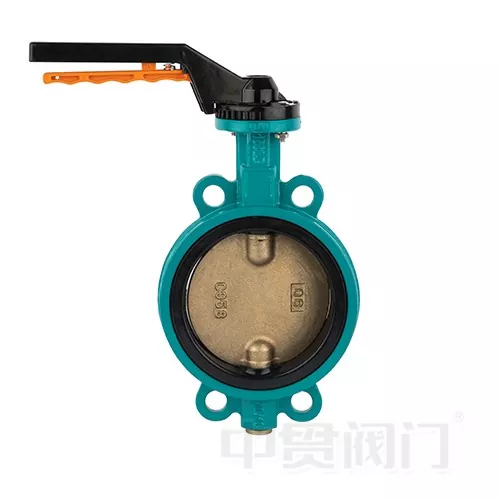Why Is a Resilient Seat Butterfly Valve the Ideal Choice for Industrial Flow Control?
2025-10-09
When I first explored various valve solutions for fluid control, I quickly realized that not all valves offer the same balance of performance, durability, and affordability. Among the many types, the Resilient Seat Butterfly Valve stood out as one of the most efficient and reliable options used across water treatment, HVAC, power generation, and chemical processing industries. Its design ensures minimal leakage, easy operation, and long service life—all of which are essential in maintaining stable flow systems.
What Is a Resilient Seat Butterfly Valve?
A Resilient Seat Butterfly Valve is a type of quarter-turn valve that uses a flexible elastomer seat to ensure a tight seal against the disc. This seat "resilience" allows for zero leakage even under varying pressure and temperature conditions. It operates by rotating the disc 90 degrees to open or close the passage of fluid.
Main Features and Parameters
| Parameter | Specification |
|---|---|
| Size Range | DN50–DN1200 |
| Body Material | Ductile Iron, Cast Iron, Stainless Steel |
| Seat Material | EPDM, NBR, Viton |
| Pressure Rating | PN10 / PN16 |
| Working Temperature | -10°C to +120°C |
| Operation Type | Lever, Gear, Pneumatic, or Electric |
| Standards | ISO 5752, EN 593, API 609 |
These specifications make it a universal solution adaptable to multiple pipeline systems, ensuring a long service life with minimal maintenance.
What Is the Function of a Resilient Seat Butterfly Valve?
The main function of this valve is to control the flow of liquids or gases within a pipeline by providing tight shut-off and throttling capabilities. Its lightweight design and compact structure make installation easy, even in space-constrained systems.
-
Tight sealing: The resilient seat guarantees zero leakage.
-
Low operating torque: Enables smooth manual or automated operation.
-
Corrosion resistance: Ideal for applications involving water, air, or mild chemicals.
-
Cost efficiency: Provides excellent performance with a lower cost compared to other valve types.
As a professional in valve applications, I can say that the Resilient Seat Butterfly Valve is often my go-to solution when clients need reliable sealing with minimal maintenance.
What Are the Performance Effects in Real Applications?
In actual operation, the Resilient Seat Butterfly Valve offers stable performance and helps maintain pipeline efficiency. When used in water treatment plants, it minimizes downtime caused by leaks or mechanical wear. Its resilience allows the seat to return to its original shape after each operation, maintaining sealing integrity over time.
From my experience, it also helps reduce vibration and noise in high-pressure systems, ensuring smooth and silent operation. Whether it's used for isolation or throttling, this valve demonstrates excellent adaptability to both clean and slightly contaminated fluids.
Why Is It Important in Modern Industry?
Industrial pipelines require components that balance durability and precision. The Resilient Seat Butterfly Valve plays a critical role by combining flexibility and strength. Its soft seat ensures tight shut-off without damaging the disc, making it suitable for continuous or frequent operation.
-
Safety: Prevents leaks and pressure loss.
-
Durability: The resilient seat extends the valve's working life.
-
Versatility: Applicable to water, air, oil, and mild chemical services.
-
Sustainability: Reduces maintenance frequency and waste generation.
For many modern systems that demand environmental responsibility and operational stability, choosing the right valve type—like this one—is an investment in long-term reliability.
Q&A Section
Q1: Why should I choose a Resilient Seat Butterfly Valve over a metal-seated one?
A1: The resilient seat offers superior sealing performance and is more cost-effective. It also resists corrosion and is ideal for low- to medium-pressure systems, unlike metal-seated valves that are designed for high-temperature or abrasive applications.
Q2: How does the seat material affect the valve's performance?
A2: The seat material determines the valve's compatibility with different fluids. For example, EPDM is suitable for water and air, NBR works well with oils, and Viton is ideal for chemical resistance. Choosing the correct seat ensures maximum efficiency and service life.
Q3: What makes Zhejiang Zhongguan Valve Manufacture Co., Ltd. a reliable supplier?
A3: Zhejiang Zhongguan Valve Manufacture Co., Ltd. is a professional manufacturer with years of experience in producing high-quality Resilient Seat Butterfly Valves. Their valves comply with international standards, undergo strict quality control, and are customized to meet various industrial needs. I've personally found their technical support and delivery reliability outstanding.
Applications
-
Water and Wastewater Treatment
-
HVAC and Building Services
-
Irrigation Systems
-
Food and Beverage Industry
-
Chemical and Power Plants
Each of these industries benefits from the valve's easy installation, reliable performance, and ability to handle a wide range of media.
Conclusion
In conclusion, the Resilient Seat Butterfly Valve is a versatile, cost-efficient, and dependable solution for modern industrial fluid control. Its flexible seat, compact design, and zero-leakage feature make it a preferred choice across various applications. Zhejiang Zhongguan Valve Manufacture Co., Ltd. continues to provide top-quality valves that meet global standards—ensuring that every project achieves both performance and reliability.
If you're looking for premium-quality Resilient Seat Butterfly Valves, please contact us today to get professional technical advice and customized solutions for your system.



